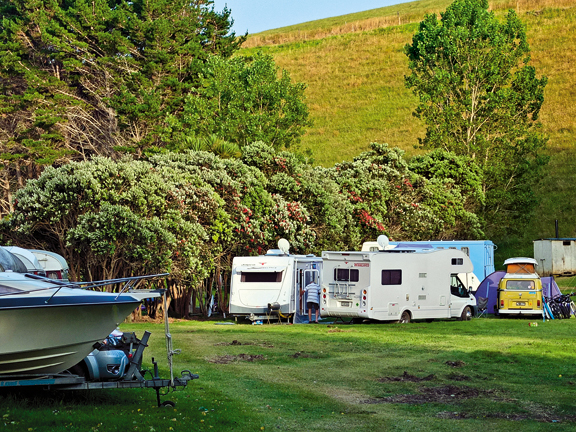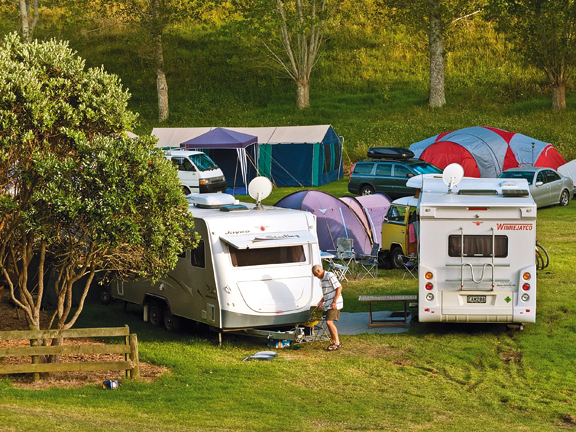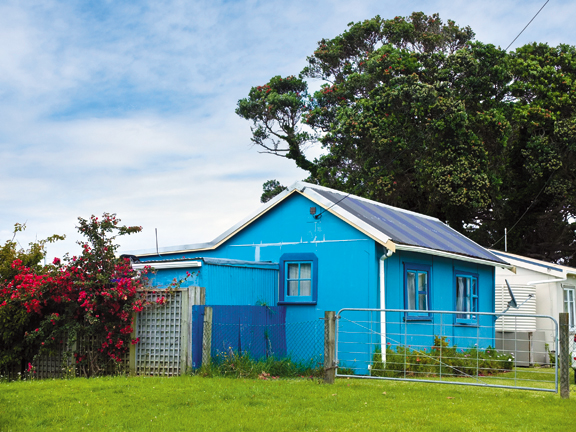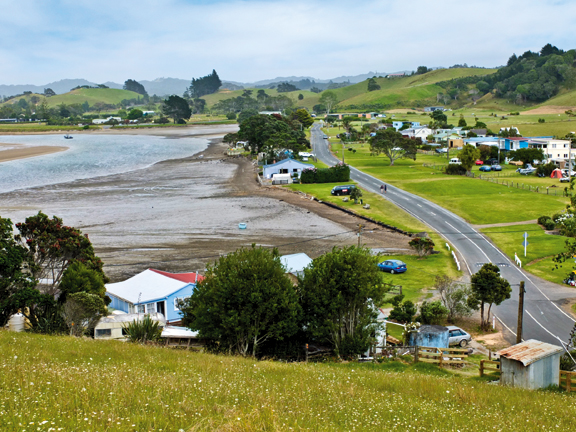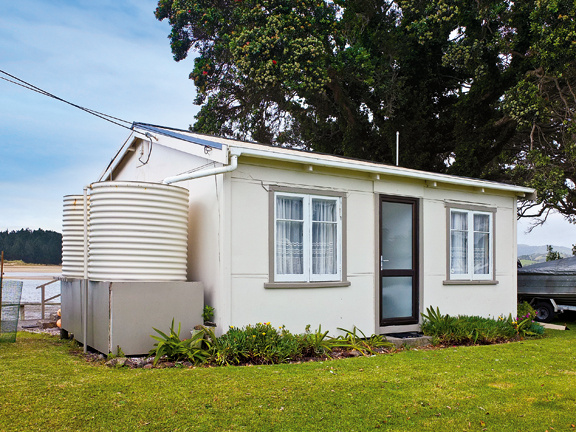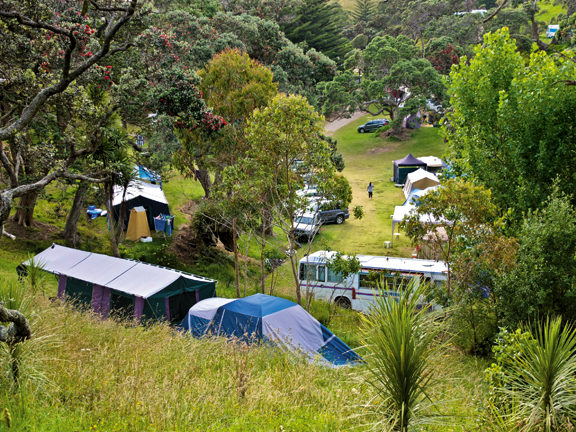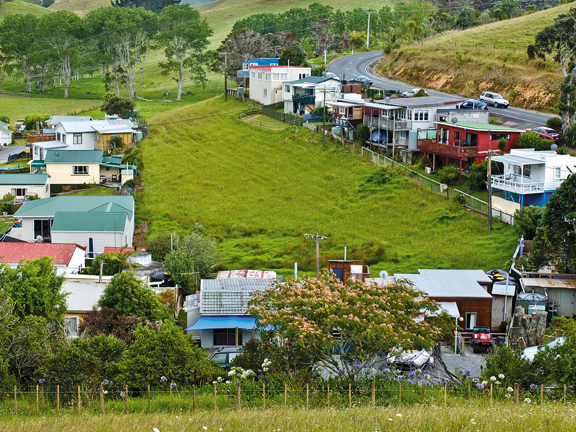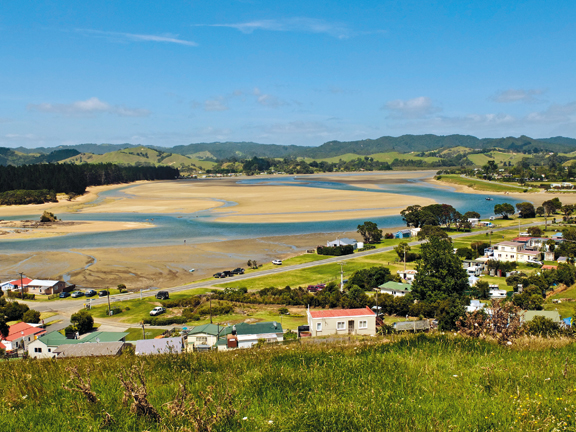One of the great things about travelling in a motorhome or caravan in New Zealand is it is almost impossible to have been everywhere. You might think you have, and then another location pops up and you wonder, “How could I ever have missed this before?”
During this last long hot summer we followed a friend to Whananaki North, about 22 kilometres inland from Hikurangi in the Far North. I'd seen the sign from SH1 often enough but passed it by without another thought.
Whananaki, as it turned out, was an amazing find — a discovery for us but well-known to others, many of whom have been camping there for two or three generations.
The barely-there nostalgic villages of Whananaki North and South are divided by a wide curving estuary and connected by the longest footbridge (so it is said) in the Southern Hemisphere. Its graying timber trestles arch 395 metres across the water like an elongated skeleton.
I found where it started at the end of a path running alongside the village hall and pounded my way across at high tide, spotting a stingray and schools of darting fishes in the depths below. There was no sign from the bridge — or in any part of the estuary — of pateke (brown teal), even though the area is a designated sanctuary for this very rare dabbling duck, endemic to New Zealand.
The estuary's north head is a long undulating peninsula owned and farmed since 1920 by generations of the Barron family, currently Helen and Bruce, a delightfully down-to-earth, ever-smiling couple who have magnanimously turned their 75-hectare property named Motutara Farm into one of the most desirable camping grounds in New Zealand. On the hillsides they have levelled terraces for individual sites among embracing foliage, and marked out others on the beach fronts or in the sheltered valleys.
The two surf beaches are as good as it gets in the north: whipped cream surf folding onto shortbread-coloured sand; pohutukawa trees leaning drunkenly over the beach to provide shade; the smell of brine and baking grass. This is the way camping grounds used to be — just cold water and long-drop toilets by way of facilities, with nature providing the rest.
The tip of the peninsula has been gifted as a reserve and is now administered by DOC. Walkways lead to rocky inlets and secluded beaches across undulating country thickly carpeted in long grass.
Outside Motutara Farm, crammed up against one end of the estuary, are nostalgic baches, falling right out of the pages of the 40s and 50s. Further along, adjacent to the country school and the village hall, a general store sells a range of beachside needs and top-up groceries. At the counter I often had to elbow my way through a gaggle of kids with their hot breath and sandy skin, jiggling loose change and eyeing up the sweet treats in an agony of indecision. A small cookery next-door serves hamburgers and fish-and-chips, heavily sprinkled with lemon pepper and wrapped in yesterday's newspaper. The village of Whananaki North took me back 50 years.
We ate this fishy treat on a seat outside the shop and were joined by a young couple from Germany who were fueling up with the Kiwi staple before they tackled the coastal walk. “You eat this from da newspaper with your fingers only?” Ingrid exclaimed, raising an eye brow. “The fingers I think, get — how d'you say — slippy and dripping.”
The coastal walkway starts across the bridge at Whananaki South. It is around five-kilometres long, winding through bush and farmland and commanding great views of the sea and the Poor Knights islands. About two kilometres along is a short access track to the Capitaine Bougainville memorial on the headland and of Oruaea Bay. This simple monument is not a commemoration to a ship's captain but to a cargo vessel. On 5 September, 1975, it was en route to Sydney with eight passengers and a crew of 29 on board. Close to the shore of Whananaki South the Capitaine Bourgainville caught fire and sank in a ferocious sea with the loss of 16 lives.
It's no surprise that during the peak of the summer season every last bit of camping space at Motutara Farm is booked. But at other times of the year there is plenty of room. We have had thoughts of spending a few weeks there in the spring if the weather keeps up.
Another option at any time of the year (although also crowded in the height of summer) is at the pleasantly-appointed holiday park on the lip of the estuary near the village at Whananaki North. It has a swimming pool, good facilities and shady sites and last year offered winter rates of $80 a week. I believe the camp has since changed hands so there is no telling what it will be this year.
At weekends the school also makes its grounds available for motorhomes and caravans to park. It's on the estuary as well and has toilet facilities, a washing machine and hot showers for a dollar. There's not a lot of shade but given its locality the rate of only $10.00 per person, per night, seems reasonable.
But as an alternative to Motutara Farm, surfers and swimmers will more likely prefer the superbly-located DOC camp at Otamure a few kilometres to the north.
“Best place north of the Bombay Hills,” a once-a-year resident and fisherman told me. He'd come to the Whananaki Store to buy supplies. “She's a great spot. Around April the wife and me bring the motorhome and stay at Otamure for a month.”
We had to see what he was on about. The short drive from Whananaki was spectacular. The clouds had stalled and the sun was steady in the sky as we cruised past crescent beaches, ragged islands and rocky headlands dripping with pohutukawa trees.
The Otamure Camp flanks another stunning curve of pastel-coloured beach, held by rocky headlands. Seventy-five campsites vie for shade. The charges are $10 per person per night with a two-dollar fee for a rubbish bag. Some might think this a bit steep for a DOC campsite with only toilets and cold showers but Otamure has location in spades. The views are million-dollar, even if they are not from your actual site, and there are apparently great bush/beach walks and fishing, although I didn't have time to check these out (not yet, anyway).
Otamure is clearly another place to add to my New Zealand bucket list, which every time I go somewhere, seems to be getting longer.
For the latest reviews, subscribe to our Motorhomes, Caravans & Destinations magazine here.

The road to Milford Sound
Explore the awe-inspiring journey to Milford Sound through Fiordland National Park – from scenic DOC campsites and iconic hikes to wildlife cruises and luxury stays

